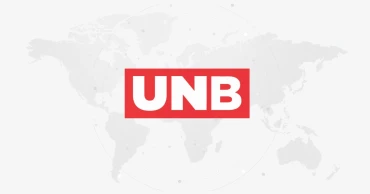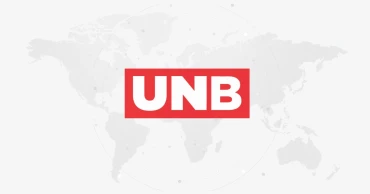KGDCL
Acute gas crisis hits Chattogram city residents hard
Different areas in Chattogram city have been experiencing shortage or low pressure in gas supply for the past one and a half months, hampering the household chores and production at industrial units.
City dwellers said although the gas crisis started in the mid October, it has intensified recently. Some of them alleged that they do not get any gas even in 24 hours.
According to Karnaphuli Gas Distribution Company Limited (KGDCL), the gas shortage in Chattogram port city turned acute due to suspension of gas supply from one of the two LNG terminals in Moheshkhali.
Besides, the authorities also suspended gas supply in households due to maintenance purposes.
KGDCL authorities said Chattogram used to some 310-400 million cubic feet of gas from the national grid during normal time but on January 3 it reveived only 280 million cubic feet.
The city dwellers have been experiencing the gas crisis since October 22 and gas supply remains suspended from 9 am to 3 pm in most of the areas.
Industries in Dhaka, adjoining areas to get Bhola’s gas in CNG form
KGDCL authorities said the gas shortage may continue for a long time due to low pressure of gas supply from Moheshkhali LNG gas terminal.
Meanwhile, Omar Hazzaz, president, Chattogram Chamber of Commerce and Industries (CCCI), urged State Minister for Power, Energy and Mineral Resources Nasrul Hamid to take necessary steps to mitigate the sufferings of the consumers.
He also sent a letter to the minister on Wednesday.
“Chattogram needs 400-450 million cubic feet of gas but only 280 million cubic feet is available now. Of the total gas, nearly 100 million cubic feet gas is used in two fertilizer factories and one thermal power plant while the rest are being distributed to the residents, industries and CNG filling stations, which is not sufficient,” the letter reads.
The rest of the gas is being distributed to a large number of residential consumers in the city, factories and CNG stations using various strategic methods. As a result, the factories and households are facing a serious gas crisis, it added.
Industries in Dhaka, adjoining areas to get Bhola’s gas in CNG form
Managing director of KGDCL (operation division), Engineer Aminur Rahman, said the people of Chattogram port city depend on LNG gas supply and the supply of gas has reduced remarkably.
“It is difficult to say how long the crisis will stay,” he added.
Talking to some residents in Lalkhan Bazar, Kazir Dewri, Askar DighirPar, Khulshi, Jamal Khan lane, Dewanji Pukur Par, Dewan Bazar, Hem Sen Lane, Shulokbohor, Ghat Farhadbegh, Bakolia, Chawkbazar and others area, this UNB correspondent found that people of those areas are passing their days in misery during this winter.
Many residents of the areas said it is not new. Every year they experience gas crisis from November to February.
Shahnur Sultana, an employee of a bank, said “Now I have to leave my house in the morning without having any breakfast as there is no gas in my house in the morning. We have to buy food from a local hotel.”
KGDCL authorities said the gas supply to the domestic consumers has been disrupted as they have to supply gas to Chattogram Urea Fertilizer Limited (CUFL) and Karnaphuli Fertilizer Company Limited (KFCL).
Raid Uddin Ahmed, General Manager (Marketing, South Division) of KGDCL, said two Moheshkhali LNG terminals supply a total of 800-900 million cubic feet of gas to the national grid but now supply from one of them has been suspended due to maintenance work.
The supply situation will improve after the completion of the maintenance work, he added.
There are 6,01,914 consumers under KGDCL and of these, 5,97,516 connections are given to households.
Gas supply from Bhola to Dhaka’s industries in CNG form begins
1 year ago
KEPZ textile zone can transform Bangladesh’s textile business: Youngone Chairman
Textile zone at the Korean Export Processing Zone (KEPZ) in Chattogram will become a “textile hub” in Bangladesh bringing a lot of businesses if the required support is provided to "quickly and fully '' implement it, says the Youngone chief.
He said the five mega factories, if completed, will have a combined floor space of over 2,000,000 sft.
“Bangladesh needs to make a lot of efforts to produce and supply more manmade fibre (MMF) so that such a supply chain is established successfully here,” said South Korea-based global conglomerate Youngone Corporation Chairman and CEO Kihak Sung.
Also read: S Korea provides US$ 1 mn to IOM to support Rohingyas ...
He said such efforts will help Bangladesh get a lot of businesses, not losing everything to Vietnam. “That’s my challenge now.”
During an interaction at the KEPZ recently, Sung said they have a budget to invest another US$ 400 million of their investment. “As long as we’re competitive and customers can take our goods and they make a profit, then we can increase it (investment volume)."
Youngone already started manufacturing polyester fabrics at the two latest state-of-the-art polyester product factories with a floor space of over 430,000 for each which will be expanded to two more similar units for export and supply of high-quality products to garments and apparel factories in Bangladesh as an import substitute and backward linkage.
Read Textile backbone of Bangladesh’s industrial efforts: FM
“We want to be really supportive of Bangladesh garment factories. We need to make raw materials, garments and everything here,” Sung said, adding that quality energy supply still remains the main challenge.
He said they are applying for the generation of captive power in the KEPZ to meet "essential demand of quality" power supply for the sophisticated textile industries.
4 years ago



